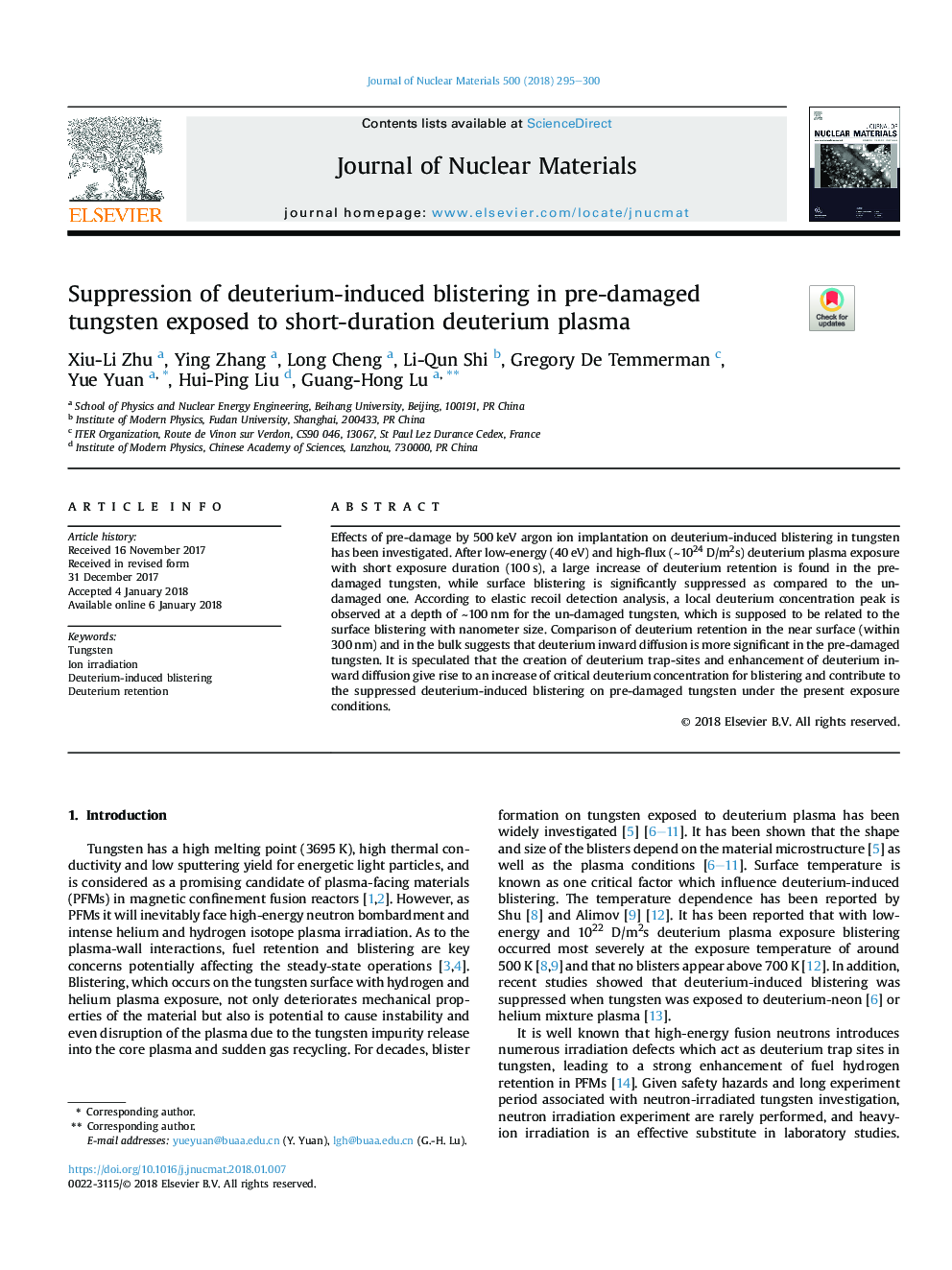| Article ID | Journal | Published Year | Pages | File Type |
|---|---|---|---|---|
| 7963486 | Journal of Nuclear Materials | 2018 | 6 Pages |
Abstract
Effects of pre-damage by 500â¯keV argon ion implantation on deuterium-induced blistering in tungsten has been investigated. After low-energy (40â¯eV) and high-flux (â¼1024 D/m2s) deuterium plasma exposure with short exposure duration (100â¯s), a large increase of deuterium retention is found in the pre-damaged tungsten, while surface blistering is significantly suppressed as compared to the un-damaged one. According to elastic recoil detection analysis, a local deuterium concentration peak is observed at a depth of â¼100â¯nm for the un-damaged tungsten, which is supposed to be related to the surface blistering with nanometer size. Comparison of deuterium retention in the near surface (within 300â¯nm) and in the bulk suggests that deuterium inward diffusion is more significant in the pre-damaged tungsten. It is speculated that the creation of deuterium trap-sites and enhancement of deuterium inward diffusion give rise to an increase of critical deuterium concentration for blistering and contribute to the suppressed deuterium-induced blistering on pre-damaged tungsten under the present exposure conditions.
Related Topics
Physical Sciences and Engineering
Energy
Nuclear Energy and Engineering
Authors
Xiu-Li Zhu, Ying Zhang, Long Cheng, Li-Qun Shi, Gregory De Temmerman, Yue Yuan, Hui-Ping Liu, Guang-Hong Lu,
